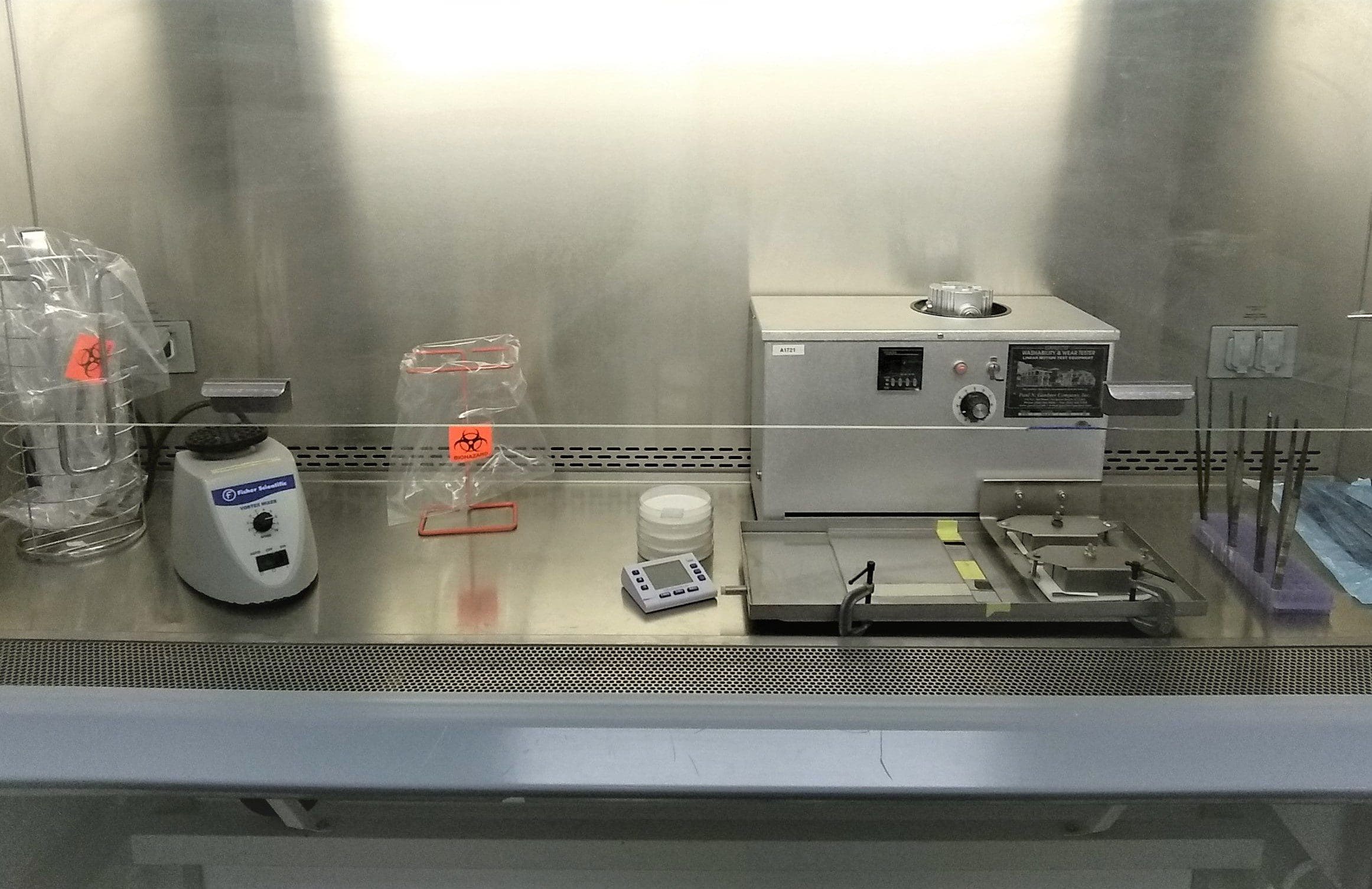Virucidal Residual Self-Disinfection (RSD)
Get A Testing Quote
The residual self-disinfection (RSD) method follows the EPA’s Interim Residual Self-Sanitization Protocol # 01-1A. It evaluates the residual disinfectant efficacy of antimicrobial products after application to inanimate, nonporous, and non-food contact hard surfaces.
This is the only EPA-approved method that can be used to substantiate a 24-hour residual disinfectant claim. Claims for a shorter or longer duration, should be addressed with the EPA prior to coordinating testing with Microchem Laboratory.
Currently, the EPA allows for appropriately documented modifications to this method to support residual virucidal disinfectant claims. In addition to adhering to Protocol # 01-1A, the virucidal recovery and cytotoxicity assessments are performed in accordance with the principles of ASTM E1053; the standard virucidal method detailed in OCSPP 810.2200 Product Performance Test Guideline.
Virucidal efficacy testing should be performed for the most difficult to inactivate virus that the product claims to kill. Claims for residual virucidal disinfectant efficacy against other viruses may be bridged from the non-residual virucidal data supporting the product. See Microchem Laboratory’s extensive selection of viruses.
Due to the EPA’s changes to the Interim Guidance, Microchem Laboratory encourages working closely with our scientists to determine the best protocol modifications and parameters for your product needs.
This test method was originally developed by Clorox and submitted to the EPA to support claims for an innovative spray product.
SUMMARY OF THE EPA RESIDUAL SELF DISINFECTANT METHOD
- The product or products (test substance) being evaluated for efficacy along with the method-specified control substance, are tested in quadruple replicate on 1 x 1 inch glass carriers or stainless-steel carriers. EPA currently allows for liquid formulations or spray products. For towelette products, please consult with the EPA in advance.
- Viral stocks are thawed and diluted as necessary, then supplemented with a “organic soil load”.
- A volume of the prepared virus is inoculated onto the surface of each of four carriers (per each product tested). Additionally, another set of four carriers are inoculated for the parallel controls.
- The inoculated test and control carriers are allowed to dry at the appropriate conditions for the virus.
- The dry, inoculated carriers are treated with the test substance and control substance and allowed to dry for at least 3 hours or until completely dry at room temperature and ~45-55% relative humidity.
- After the minimum 3-hour dry time, each set of test and control replicates undergo a wear and reinoculation regimen, which takes place over 24 hours at room temperature and 45-55% relative humidity, with alternating dry and wet abrasions. Abrasion of the test surface is done using a standardized Gardco abrasion machine.
- There are a total of 12 alternating wet-dry abrasion cycles and a total of 11 reinoculations, with a minimum of 15-minute rest times after each wear until the next reinoculation then allowing at least a 30-minute drying time at ambient temperature after each reinoculation.
- After the abrasion and reinoculation procedure is complete, the carriers undergo the disinfection test (performed at least 24 hours after application of the test product).
- The disinfection test includes inoculating each abraded test carrier with test culture, allowing it to sit for the Study Sponsor requested contact time (≤10 minutes), and then neutralizing it in appropriate neutralizer. The parallel control carriers are treated in the same manner as the test carriers.
- To obtain residual virucidal disinfectant claim, the product(s) should achieve ≥ 3-log reduction in ≤10 minutes for the hardest to kill virus when compared to the parallel controls.
STRENGTHS OF THE EPA RESIDUAL SELF DISINFECTANT METHOD
- The method is quantitative allowing for clear pass/fail indication.
- The method attempts realism by incorporating abrasion (wear) of the test surface as well as re-inoculation over the course of the test.
WEAKNESSES OF THE EPA RESIDUAL SELF DISINFECTANT METHOD
- The repeat abrasion portion of the test requires considerable investment in laboratory equipment and considerable technical expertise to be performed correctly and consistently, decreasing the number of laboratories that can undertake the test and increasing the likelihood of lab-to-lab variability.
- Due to the duration of the study and hundreds of manipulations of the test and control surfaces throughout, variability from replicate to replicate is sometimes observed.

